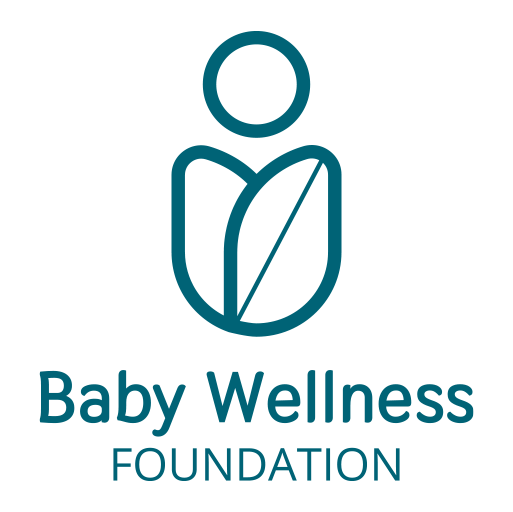Approfondimenti scientifici
Vitamin D Prophylaxis in the First 12 Months of Life

Vitamin D plays a key role in regulating bone metabolism and modulating immune responses. In the first months of life, supplementation is essential for the prevention of nutritional rickets and for maintaining an adequate vitamin status.
It is a fat-soluble prohormone, crucial for calcium homeostasis and skeletal health. Its deficiency, common in pediatric age, is associated with bone mineralization defects and possible alterations in immune response. For this reason, vitamin D prophylaxis is recommended from the very first days of life.
The two main forms are:
- Vitamin D₂ (ergocalciferol): of plant origin.
- Vitamin D₃ (cholecalciferol): synthesized in the skin through UVB exposure.
Both require two hydroxylations to become active:
- In the liver: hydroxylation to 25-hydroxyvitamin D [25(OH)D], the storage form.
- In the kidney: hydroxylation to 1,25-dihydroxyvitamin D [1,25(OH)₂D], or calcitriol, the hormonally active form.
Pathophysiological Rationale for Prophylaxis
Newborns have limited vitamin D stores, mainly related to maternal levels during pregnancy. Transplacental transmission occurs mainly in the third trimester, but many newborns are born with suboptimal levels, especially if the mother is vitamin D deficient.
Breast milk contains insufficient vitamin D (about 25–80 IU/L), and even formula-fed infants achieve adequate intake only with significant volumes (≈1 liter/day), which is often delayed until after the initial weaning phase.
Vitamin D regulates calcium-phosphorus metabolism and has the following effects:
- Stimulates intestinal absorption of calcium and phosphorus
- Promotes bone mineralization
- Reduces parathyroid hormone (PTH) secretion
- Modulates osteoblastic activity and bone remodeling
- Supports innate and adaptive immune response
During neonatal growth, the balance between osteoblastic and osteoclastic activity is crucial for proper mineralization, which occurs through deposition of hydroxyapatite in the bone matrix. Vitamin D stimulates the synthesis of calcium-binding proteins (e.g., calbindin), contributing to the development of adequate bone architecture.
Indications for Prophylaxis
Vitamin D supplementation is recommended for all newborns, regardless of feeding type, starting from the first days of life. Prophylaxis should be maintained at least until 12 months and extended in children with persistent risk factors.
Vitamin D, Respiratory Infections and Atopic Dermatitis
Current evidence on the preventive role of vitamin D in respiratory infections is still limited. Some studies suggest potential benefits in preventing conditions like uncomplicated acute otitis media, but data are insufficient to recommend systematic use for prevention.
To support an effective immune response, 25(OH)D levels must exceed the minimum required to prevent rickets. In cases of deficiency, supplementation may help reduce infection risk.
Epidemiological studies have shown an association between low vitamin D levels and increased incidence or severity of atopic dermatitis. However, findings are not conclusive, and some studies do not confirm this correlation. It is hypothesized that vitamin D may modulate skin inflammation by acting on immune cells (T lymphocytes, dendritic cells), which are involved in the disease’s pathogenesis.
Recommended Dosages
Full-term newborns
- Standard: 400 IU/day
- With risk factors: up to 1,000 IU/day
Preterm newborns
- < 1,500 g: 200–400 IU/day (including contributions from parenteral/enteral nutrition)
- ≥ 1,500 g: 400–800 IU/day until 40 weeks post-conceptional age
After this threshold: follow recommendations for full-term newborns
Mode of Administration
Supplementation should be daily, preferably with vitamin D₃ (cholecalciferol), although vitamin D₂ (ergocalciferol) is also effective. Active metabolites (e.g., calcitriol, alfacalcidol) should not be used for prophylaxis, except in specific conditions, as they do not replenish liver stores and increase the risk of hypercalcemia.
Armas LA, Hollis BW. Vitamin D: a critical nutrient for bone and immune system health. Journal of the American College of Nutrition. Taylor & Francis, 2020.
Baimark Y, Benjasuwantep B, Nopmaneejumruslers C. Vitamin D status and its association with neonatal bone health. Pediatric Health, Medicine and Therapeutics. Dove Medical Press, 2021.
Ciccacci C, Manca F, Zucchi F, et al. Vitamin D supplementation in neonates: current guidelines and clinical perspectives. International Journal of Endocrinology. Hindawi, 2020.
Golembiewski J, Butschek L, Bennett J, et al. Vitamin D status in early infancy and its role in neonatal bone metabolism. Bone Reports. Elsevier, 2022.
López-Hernández M, García-Morales C, Rodríguez-Ramos A, et al. Vitamin D status in children and its influence on bone health. Journal of Pediatric Endocrinology and Metabolism. De Gruyter, 2020.
Munns CF, Shaw N, Kiely M, et al. Global consensus recommendations on prevention and management of nutritional rickets. The Journal of Clinical Endocrinology & Metabolism. Oxford University Press, 2020.
Nguyen RT, McAlister V, Boucher BJ. Vitamin D deficiency and rickets in the neonatal period. Journal of Pediatric Gastroenterology and Nutrition. Lippincott Williams & Wilkins, 2020.
Pisoni R, De Filippis D, Bonetti G, et al. Vitamin D supplementation in preterm infants: review of evidence and clinical implications. Journal of Neonatal-Perinatal Medicine. IOS Press, 2021.
Wagner CL, Houghton LA, Assouline-Dayan Y, et al. Vitamin D supplementation during pregnancy: Impact on the neonate’s bone health and immune system. American Journal of Obstetrics and Gynecology. Elsevier, 2021.
Zhao Y, Zhang L, Zhou X, et al. Vitamin D supplementation in the prevention of rickets in neonates: A systematic review and meta-analysis. European Journal of Pediatrics. Springer, 2022.
